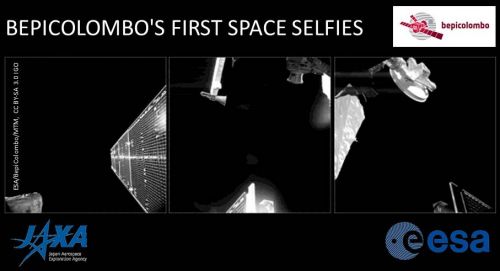
25/10/2018
SENER: on the way to Mercury!
SENER: on the way to Mercury!
BepiColombo module, composed of two satellites developed by the European Space Agency and its Japanese counterpart, respectively, took off from Kourou (French Guiana) on last October 19 to initiate its journey towards Mercury, a planet little explored and still very mysterious.
In this project, the SENER group companies with Catalan headquarters in the Barcelona Synchrotron Park are responsible for the low-gain antennas, the medium-gain antenna and the waveguides for routing the signal and the pointing mechanism for the high-gain antenna. These units are responsible for staying in contact with the Earth at all times by transmitting the satellite's telemetry and receiving its telecommands, as well as sending all the scientific data. SENER also manufactured the magnetometer boom, which separates the instruments from the satellite's magnetic influence. All these instruments are thus a critical element to the success of the mission.
BepiColombo launch is just the beginning of a 7-year very long trip (8.5 billion kilometers): Although Mercury, the nearest planet from the Sun, is relatively closed (the shortest Earth-Mercury distance is 80 million kilometers), the giant mass of the Sun does not allow a straight trip: if so, BepiColombo could not be decelerated and would inexorably fall into our star.
The technological challenge imposed by the proximity of the Sun is huge. For instance, some materials will have to resist to both extremely low (-170ºC) and high (450ºC) temperatures.
When BepiColombo arrives close to Mercury in December 2025, both scientific modules (MPO for Europe and Mio from Japan) will split up and begin their respective mission on two different orbits around the planet. MPO (11 instruments) will investigate the surface and the composition of Mercury and Mio (5 instruments) will focus on the environment (magnetosphere, atmosphere, dust, solar wind).
To follow the mission: here
Have a nice trip! See you there!
In this project, the SENER group companies with Catalan headquarters in the Barcelona Synchrotron Park are responsible for the low-gain antennas, the medium-gain antenna and the waveguides for routing the signal and the pointing mechanism for the high-gain antenna. These units are responsible for staying in contact with the Earth at all times by transmitting the satellite's telemetry and receiving its telecommands, as well as sending all the scientific data. SENER also manufactured the magnetometer boom, which separates the instruments from the satellite's magnetic influence. All these instruments are thus a critical element to the success of the mission.
BepiColombo launch is just the beginning of a 7-year very long trip (8.5 billion kilometers): Although Mercury, the nearest planet from the Sun, is relatively closed (the shortest Earth-Mercury distance is 80 million kilometers), the giant mass of the Sun does not allow a straight trip: if so, BepiColombo could not be decelerated and would inexorably fall into our star.
The technological challenge imposed by the proximity of the Sun is huge. For instance, some materials will have to resist to both extremely low (-170ºC) and high (450ºC) temperatures.
When BepiColombo arrives close to Mercury in December 2025, both scientific modules (MPO for Europe and Mio from Japan) will split up and begin their respective mission on two different orbits around the planet. MPO (11 instruments) will investigate the surface and the composition of Mercury and Mio (5 instruments) will focus on the environment (magnetosphere, atmosphere, dust, solar wind).
To follow the mission: here
Have a nice trip! See you there!
More news
14/12/2018
The Open Innovation Forum matches business challenges to academic solutions
07/12/2018
2017 BioCat report: The best of the Bioregion of Catalonia
30/11/2018
Barcelona Synchrotron Park’s Commitment to Sustainable Growth
23/11/2018
Astronomers led by IEEC reveal a cold super-Earth around Barnard’s star
16/11/2018
CRAG’s Researchers discover how to generate plants with enhanced drought resistance
08/11/2018
The Barcelona manifesto: for a city-led science and technology diplomacy









